Long-distance towing poses unique challenges, and when it comes to transporting non-running vehicles over extended distances, tow truck operators employ specialized techniques to ensure a safe and efficient transport. Whether due to mechanical failure, accidents, or other reasons, towing non-running vehicles requires careful consideration of various factors to prevent damage and streamline the process. Today, we at KB Towing Service would like to discuss the basics of long-distance towing services for disabled vehicles.
1) Vehicle Assessment & Towing Preparation
Before initiating the towing process, tow truck operators conduct a thorough assessment of the non-running vehicle. This involves checking for any existing damage, securing loose parts, and determining the most suitable towing method. Preparation is key, and operators may use wheel dollies or flatbed tow trucks, depending on the condition of the vehicle.
2) Wheel Dollies for Limited Mobility
For non-running vehicles with intact wheels and limited mobility, wheel dollies become a valuable tool. These devices, attached to the vehicle’s wheels, allow tow truck operators to lift and move the vehicle without engaging the transmission. Wheel dollies are particularly useful when dealing with cars stuck in tight spaces or those with a single-wheel malfunction.
3) Flatbed Towing for Maximum Security
In cases where a non-running vehicle cannot be safely towed with its wheels on the ground, a flatbed tow truck is often the preferred choice. The entire vehicle is loaded onto the flatbed, eliminating the risk of further damage to the drivetrain. This method is suitable for various types of non-running vehicles, including those with severe mechanical issues or missing wheels.
4) Securement and Strapping Techniques
Securing a non-running vehicle properly is crucial to prevent shifting during transportation. Tow truck operators use specialized strapping techniques, securing the vehicle at multiple points to the tow truck’s bed. Careful attention is given to balance and weight distribution to ensure a stable and level transport.
5) Hydraulic Lift Systems
Some tow trucks are equipped with hydraulic lift systems, enabling operators to adjust the angle of the flatbed for easier loading. This feature is particularly beneficial when dealing with non-running vehicles that have a low clearance or are positioned at an awkward angle.
6) Special Considerations for Towing Classic & Exotic Cars
When towing non-running classic or exotic cars, additional precautions are taken to preserve the vehicle’s integrity. Soft straps and protective coverings may be used to shield the vehicle’s body from potential scratches or damage during loading and transportation.
7) Experienced Tow Truck Operators & Specialized Towing Equipment
Successfully towing non-running vehicles over long distances requires experienced tow truck operators who are trained in handling various scenarios. Moreover, the use of specialized equipment, such as winches and skates, enhances the efficiency of the towing process, especially when dealing with challenging terrains or inaccessible locations.
8) Communication with Vehicle Owners
Throughout the towing process, effective communication with the vehicle owner is essential. Operators explain the chosen towing method, address any concerns, and provide an estimated timeline for the transport. Keeping the owner informed fosters transparency and helps manage expectations.
Towing & Roadside Assistance Services & More in Rowlett, Garland, Mesquite, Rockwall, Wylie, Sachse & Greater Dallas, Texas
Long-distance towing for non-running vehicles demands a combination of expertise, specialized equipment, and careful planning. By employing these specialized techniques, tow truck operators ensure the safe and secure transportation of non-running vehicles, providing peace of mind to vehicle owners facing unexpected challenges on the road. For towing services in Dallas, TX and surrounding areas, call KB Towing & Service and let us assist you.




